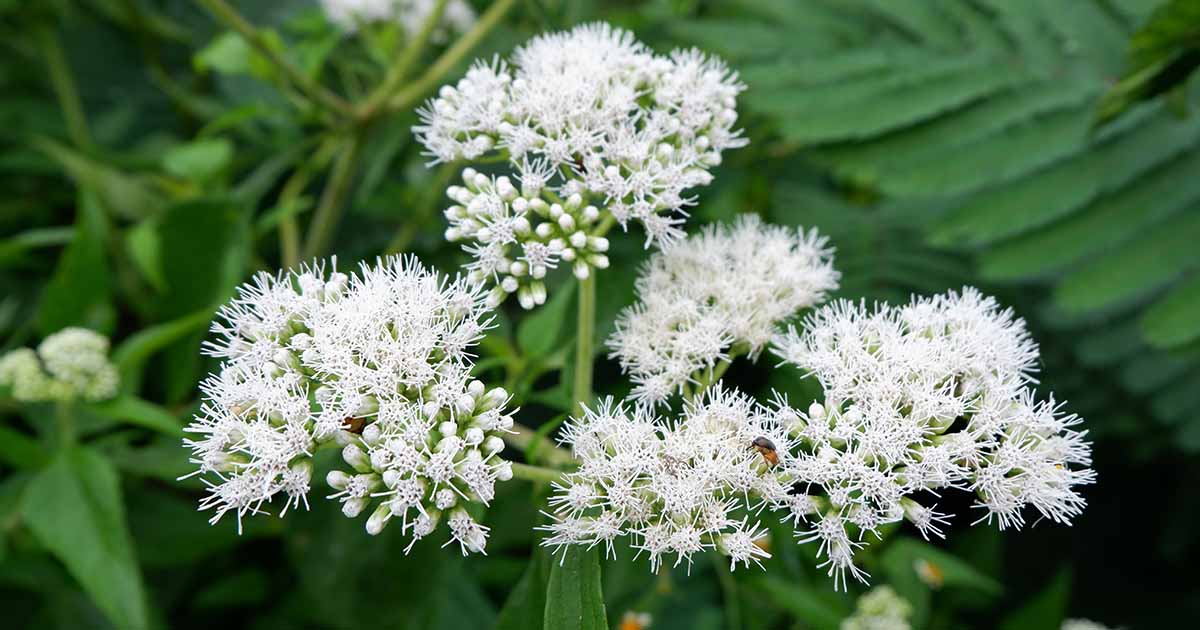Eupatorium spp.
Eupatorium is a genus of flowering plants that brings together a diverse group known as bonesets or thoroughworts.
These versatile plants serve multiple purposes in the garden, attracting and supporting a diverse range of pollinators.
Boneset can be incorporated into borders, native plant gardens, meadows, prairies, and wildflower gardens, adding both aesthetic appeal and ecological value.
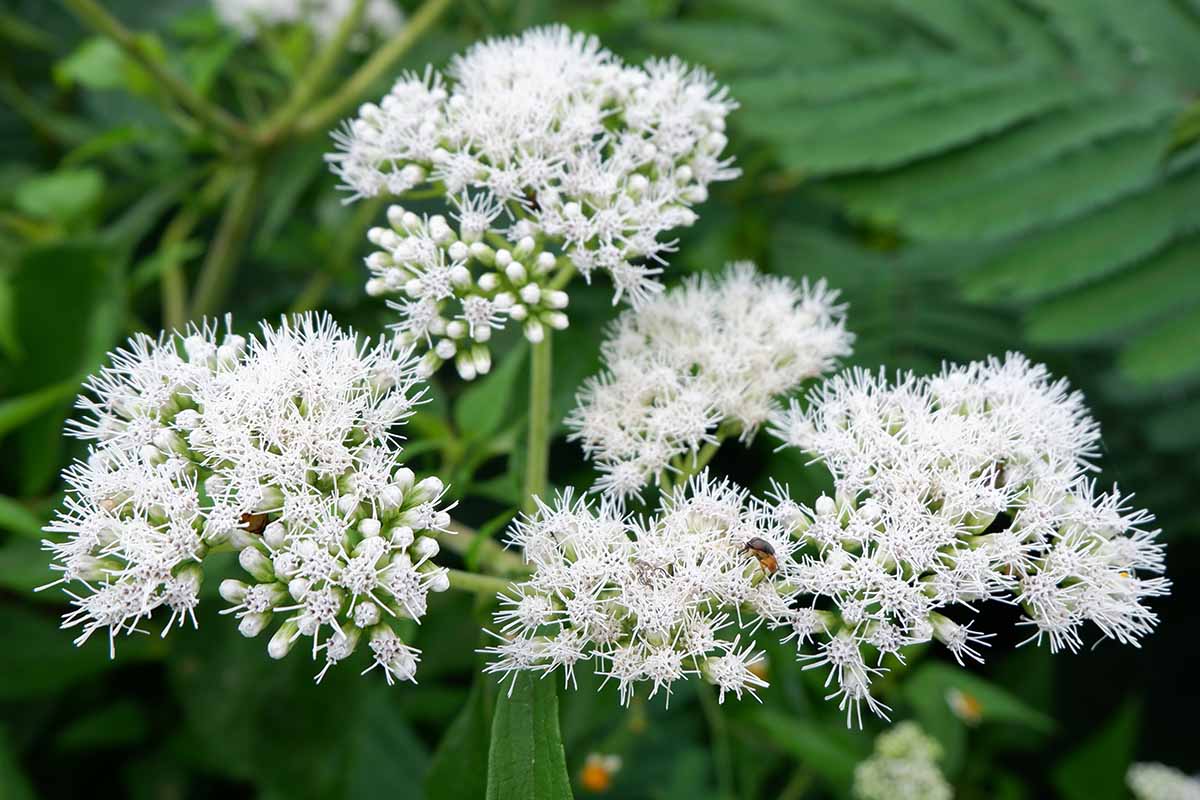

We link to vendors to help you find relevant products. If you buy from one of our links, we may earn a commission.
Beyond their ornamental and ecological benefits, bonesets also have medicinal properties, which are of interest to gardeners and herbalists alike.
Their historical use in traditional medicine has led to their inclusion in many herbal practices today, where they are valued for their potential therapeutic qualities.
Ready to learn more? Grab your gardening gloves and join us as we discuss how to cultivate boneset in your landscape.
Here’s what we’ll cover:
Boneset plants produce clusters of small, fluffy flowers that form eye-catching inflorescences, featured on tall and sturdy stems.
As the flowers fade, they often give way to small, dry fruits or seed heads, adding interest to the late-season garden.
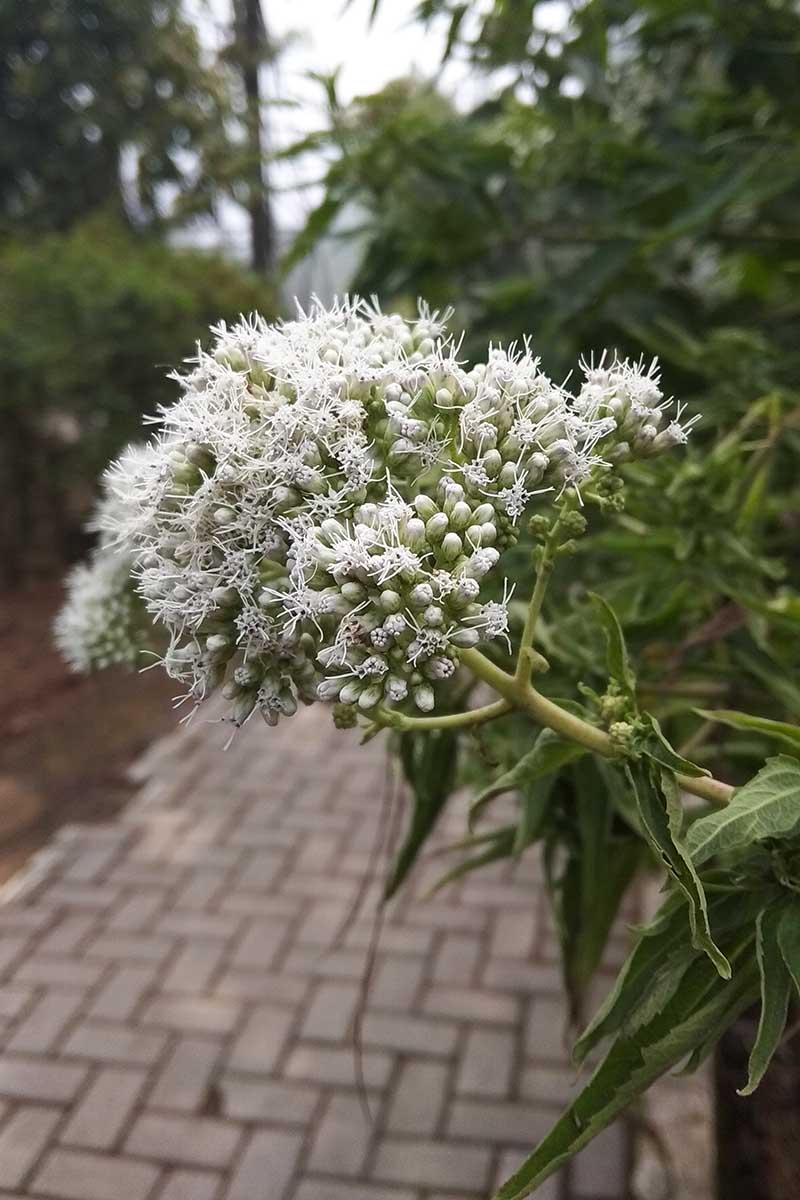

You may notice that bonesets look very similar to joe-pye weed (Eutrochium spp.).
Joe pye-weed was formerly classified in the Eupatorium genus, and in 2012 was reclassified as Eutrochium.
Together, the flowers and fruit of boneset plants create a visually appealing display that attracts pollinators and adds beauty to any garden or landscape.
Quick Look
Common name(s): Boneset, feverwort, thoroughwort
Plant type: Herbaceous perennial
Hardiness (USDA Zone): 3-8
Native to: Temperate Northern Hemisphere
Bloom time / season: Summer
Exposure: Full sun to part shade
Soil type: Average, moist, well draining
Soil pH: 6.5-7.0, slightly acidic to neutral
Time to maturity: 1 year (from seed)
Mature size: Up to 4 ft wide x up to 6 ft high (depending on species)
Best uses: Beds, borders, cottage gardens, meadows, prairie gardens, rain gardens
Taxonomy
Order: Asterales
Family: Asteraceae
Genus: Eupatorium
Species: Altissimum, capillifolium, fortunei, maculatum, perfoliatum, serotinum
These plants love moisture and are suitable for cultivation in rain gardens or areas where water tends to collect.
They spread via underground rhizomes and will happily colonize garden beds and borders, so choose your planting site accordingly.
Eupatorium is a member of the aster or Asteraceae family, and there are approximately 60 species in the genus, native to temperate areas of the Northern Hemisphere.
Some species can be found in tropical South America, Mexico, and the West Indies.
Most bonesets are herbaceous perennials, but some tropical types can grow into tree-like or shrubby forms.
Of the many species in this genus, the most common boneset known and grown in home gardens is E. perfoliatum.
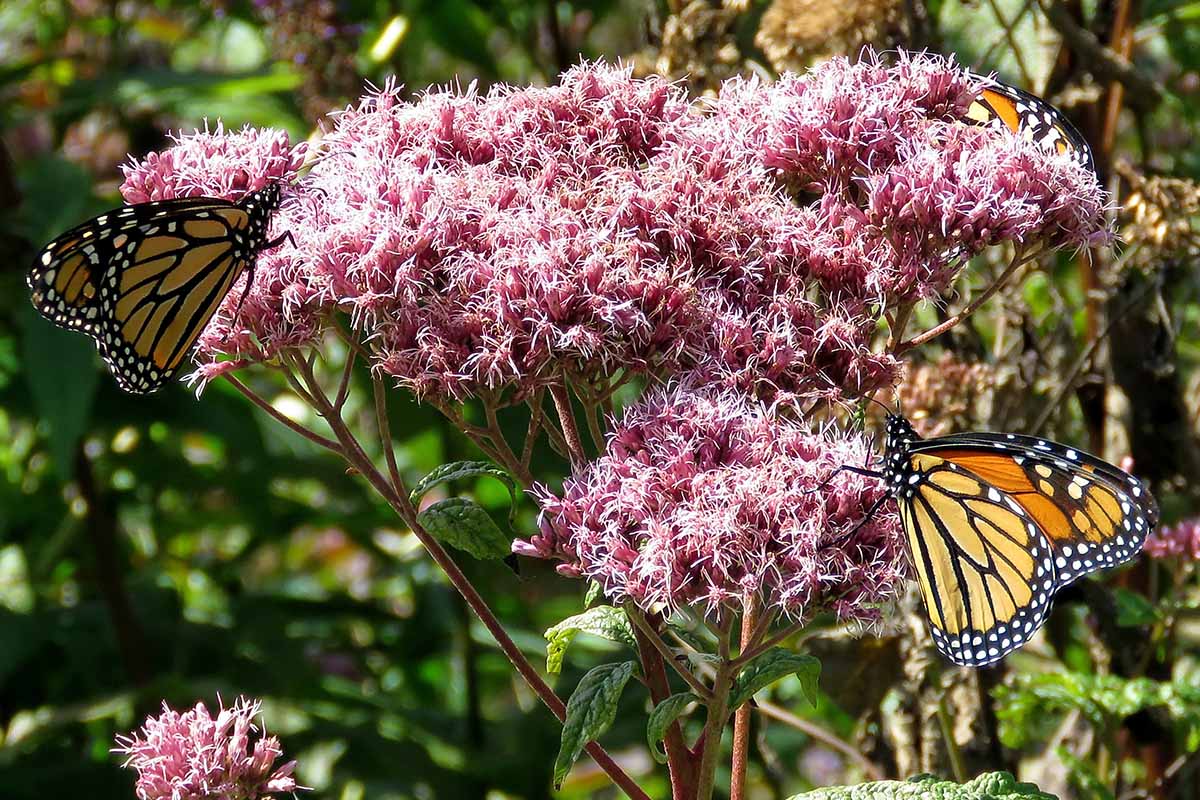

Also known as common or American boneset, feverwort, or thoroughwort, historically E. perfoliatum was used medicinally as a diaphoretic and analgesic, to alleviate fevers or cold symptoms, and for healing broken bones.
Throughout the 18th and 19th centuries, Native Americans used boneset medicinally and considered it a cure-all for many ailments.
When gardeners and herbalists think of the term “boneset,” this species is the one that comes to mind.
The plants are mildly toxic when ingested in large doses as they contain pyrrolizidine alkaloids. At the same time, this is also one of the reasons why they are valued for their medicinal qualities.
While it’s a favorite of many herbalists, some recommend staying away from remedies using boneset until more research is available regarding safe dosage.
How to Grow Boneset
In USDA Hardiness Zones 3 to 8, bonesets grow as perennials.
Since they can spread quite quickly in ideal conditions, be sure to choose a location where they won’t crowd out other plants.
Light
For best flower production, a spot in full sun is best. But they’ll be quite happy in part shade, and will thrive on the edges of woodland in filtered sunlight.
Soil
Depending on the species, boneset is best cultivated in moist, well-draining soil but will tolerate average soils as well as chalk, clay, loam, or sandy soils.
Since sandy soil drains quickly, be sure to amend it before planting with water-retentive organic materials such as compost.
These plants prefer a soil pH of 6.5 to 7.0.
Water
Boneset needs consistent moisture and should not be allowed to dry out.
Use your finger to check the soil moisture and if its at all dry, give the plants some water!
Fertilizing
Eupatorium species will not need fertilizing unless your soil is extremely depleted.
Conduct a soil test to check what nutrients are missing and use a mild fertilizer to amend according to the results of the test.
If you wish, you can side dress with compost or use a very mild, balanced fertilizer in early spring when you see new growth emerging, but it’s not really necessary.
Species to Select
Each Eupatorium species brings its own unique characteristics and qualities that can enhance your garden landscape.
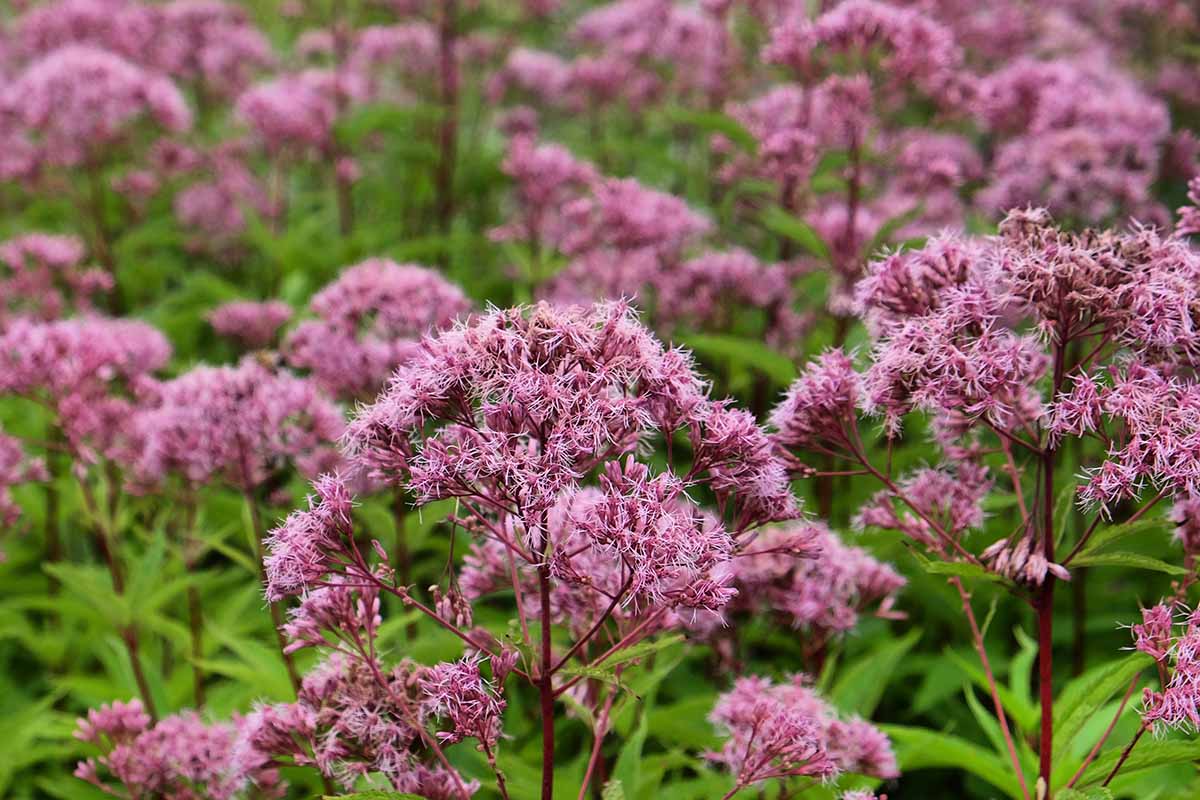

Here are some common boneset species that are well-suited for different gardening preferences and purposes.
Cannabinum
Native to Europe, this wildflower is popular in England, and its leaves resemble those of hemp, inspiring its nickname, hemp agrimony.
Loved for the beautiful, tiny pink flowers that appear from summer into fall, E. cannabinum grows up to four feet tall and spreads about four feet wide.
Plant in mixed herbaceous borders, along a the edges of a pond, or as part of a cottage garden scheme.


E. Cannabinum
This species is suitable for cultivation in USDA Hardiness Zones 4 to 9.
You can find packets of 20 seeds available via Amazon.
Perfoliatum
Native to North America and Canada, E. perfoliatum features white blooms in July and August.
It can withstand a wide range of conditions and is low maintenance, grows well in full sun to partial shade, and can tolerate full shade.
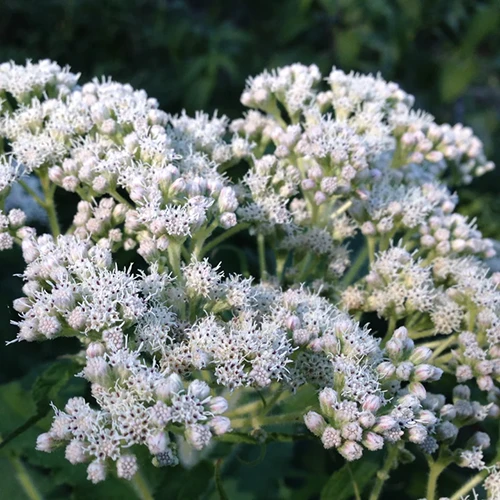

E. Perfoliatum
E. perfoliatum forms clumps of unbranched stems, spreads up to four feet wide, and grows up to six feet tall.
You can find packets of 100 seeds available at Earthbeat Seeds.
Serotinum
Also known as late boneset, E. serotinum provides gardens with white flowers from late summer to fall.
Native to eastern and central North America, it performs best in full sun to part shade in moist, well-draining soils.
It grows up to six feet tall, though the size of the plant is significantly affected by moisture levels.
Plant it in wildflower and native plant gardens, prairies, meadows, and naturalized areas. This species is moderately deer resistant.
Maintenance
If you wish, you can cut back the foliage in fall to tidy the garden as it will dieback naturally as winter sets in.
You don’t need to prune your boneset, but to encourage prolific blooming, you can give them a trim in early summer before flowering.
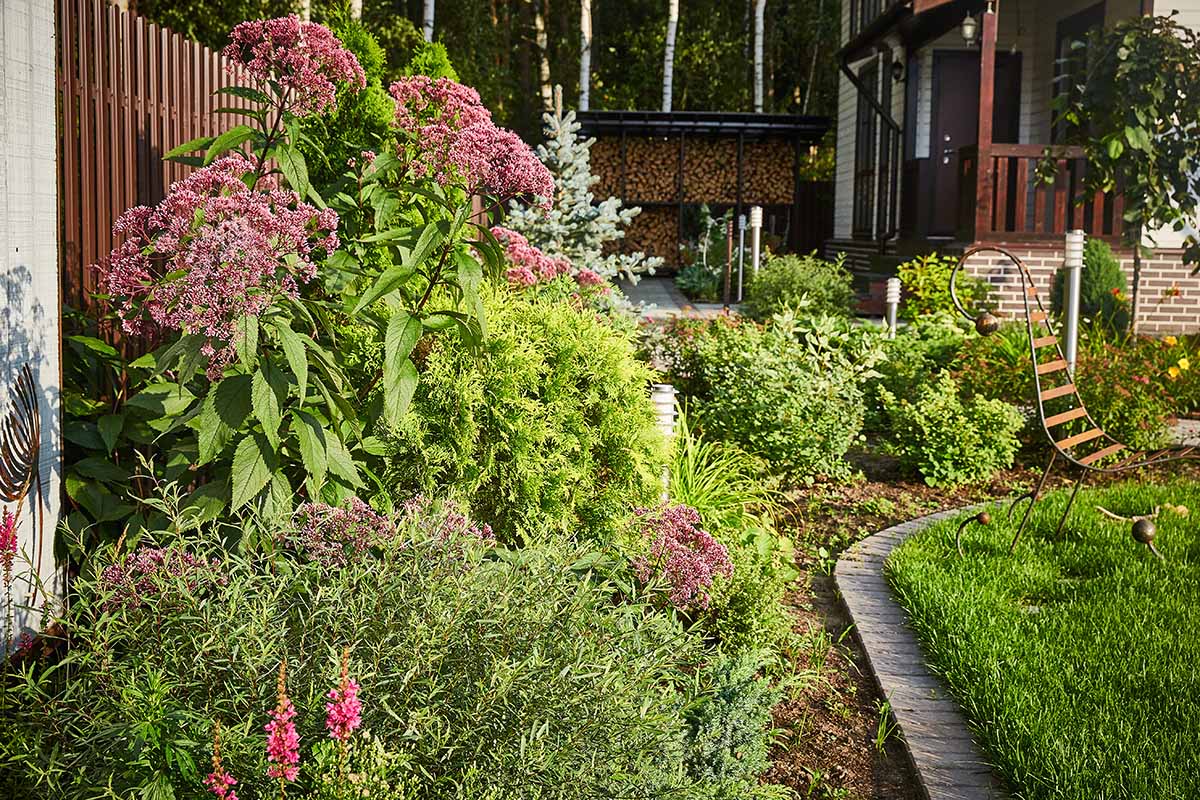

Deadheading will not encourage this plant to rebloom, though it will help control seed spread.
Plan to divide plants every few years and thin out large clumps so they don’t take over.
Propagation
Boneset can be propagated by sowing seeds, taking stem cuttings, or by division if you have a mature clump.
Let’s take a look at each method:
From Seed
Collect ripe seeds from a mature plant or purchase them from a reputable supplier.
The seeds ripen about a month after flowering and should be collected when the seed heads are dry and have started to split, but before the seeds begin to float away.
If you collect them a bit earlier, you can dry the seed heads by spreading them out in a protected place or keeping them in an open paper bag for approximately one to two weeks until they have dried out completely.
Shake the dry flower heads to remove the seeds, and store them in a dry, cool place until you are ready to sow.
If you choose to sow boneset seeds directly into the garden, you will need to do this in the late fall to provide a period of cold stratification.
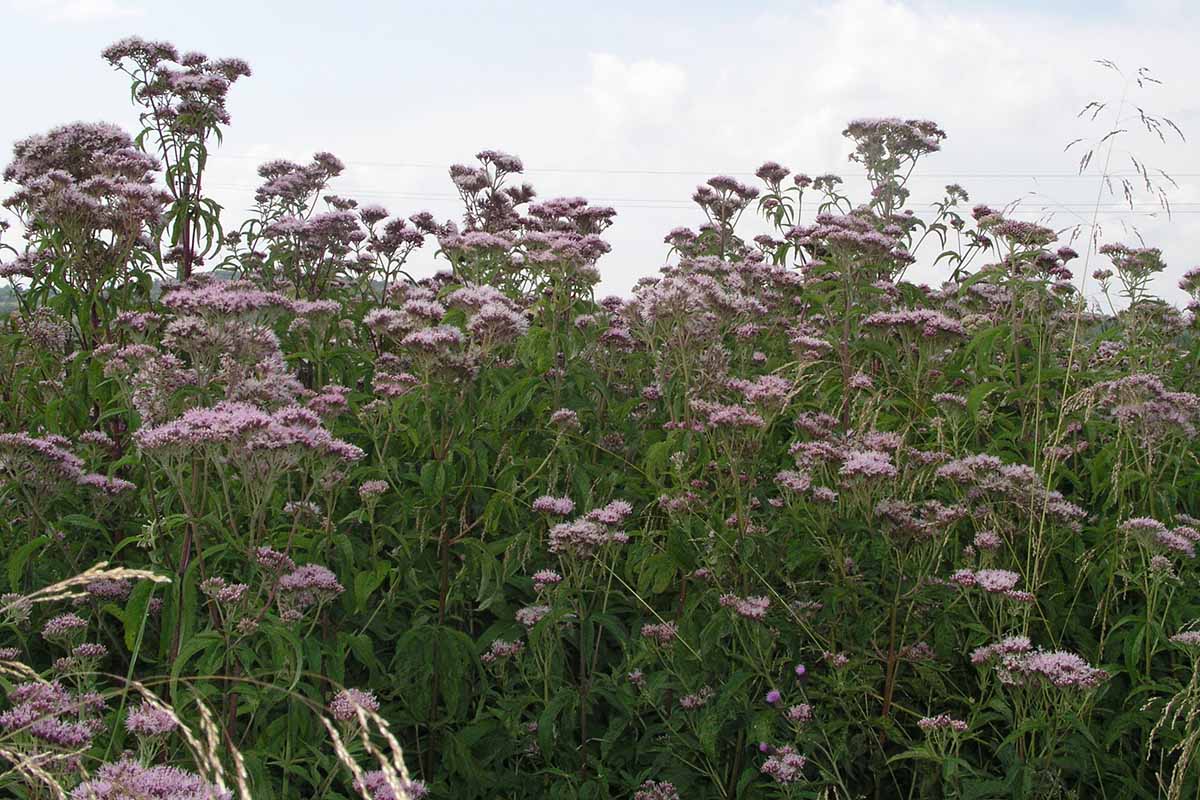

For spring sowing, mix the seeds with some moist sand and store them in the refrigerator for 60 days before sowing outdoors.
Sow seeds one to two feet apart, about 1/8 of an inch deep. Water them in well, and maintain consistent moisture.
Seeds can also be started indoors if you prefer. Here’s how:
- Fill a flat with seed-starting mix.
- Scatter your seeds onto the surface of the soil, gently pressing them into the potting medium.
- Moisten the medium and set it in bright, indirect light.
- Provide consistent temperatures of 70 to 85°F, using a heat mat if you need to.
- Maintain even moisture at all times, but don’t allow the soil to become waterlogged.
Seedlings may be transplanted outside when they are six or so inches tall.
Be sure to harden them off to outdoor conditions first, gradually increasing exposure over the course of about a week.
From Cuttings
Softwood cuttings will root quite easily, usually within a few weeks. It’s best to take cuttings when plants are not flowering, in late spring or early summer.
Take four- to six-inch stem cuttings and remove the leaves from the bottom two to three inches.
Dip the cut end into rooting hormone if you wish, and plant in a pot or tray filled with well-draining potting medium. A mix of perlite and peat moss works well.
Keep the cuttings in a warm location, exposed to bright, indirect light – and maintain even moisture in the soil.
When the last frost date has passed in your area, rooted cuttings can be transplanted out into the garden.
By Division
Mature boneset plants can be divided in the fall as they start to go dormant, or in spring as shoots appear.
Using a shovel or spade, carefully cut through the crown between two stems or stem buds.
You will want to choose a section with one intact bud, which will grow into a new shoot, and a cluster of rhizomatous roots attached to it.
After you have selected a section, gently separate it from the main plant by cutting through the roots.
Immediately replant the new division at the same depth as the parent plant.
You can learn more about dividing perennials here.
Transplanting
Wait to plant out until nighttime temperatures remain above 65°F. Seedlings may take up to a year before they are large enough to be transplanted outdoors permanently.
For planting in the ground, space transplants about 16 inches apart for smaller species, or 30 to 54 inches apart for larger ones.
If you wish to cultivate in containers, choose a pot that’s about 12 to 15 inches in diameter, with adequate drainage holes, to give the plants some room to spread.
Managing Pests and Disease
Mammals, birds, and reptiles do not typically target boneset plants as food options.
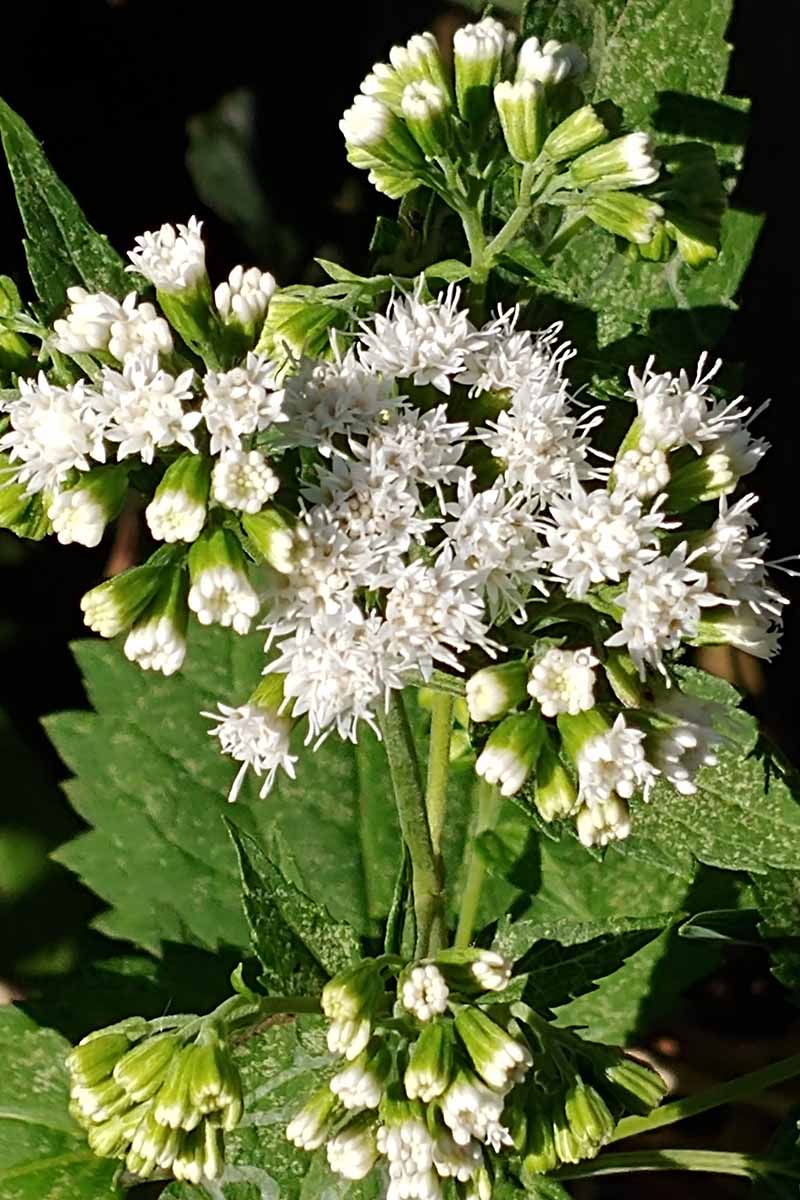

Usually considered resistant to pests and diseases, you shouldn’t experience issues with many of the insects described below, if any.
Let’s take a look at a few pests that may be attracted to your plants.
Flea Beetles
The feeding of these shiny-coated beetles leaves shotholes in the foliage.
They generally won’t cause fatal damage but infestations can cause plants to look unhealthy and lack vigor.
In the case of a large infestation you can apply neem oil or insecticidal soap, making sure to spray all over the plant.


Yellow Sticky Traps
Placing yellow sticky traps in your garden can help to trap flea beetles as well. Find yellow sticky traps available via Amazon.
Read more about dealing with flea beetles in our guide.
Lygus Bugs
Lygus bugs, aka tarnished plant bugs, are species in the Lygus genus, and they use their piercing-sucking mouthparts to feed on plant sap.
Their presence can cause damage to leaves, buds, and flowers. This damage can manifest as distorted growth, necrotic spots, or stippling of the foliage.
Like other insects, lygus bugs have natural predators such as parasitic wasps and other predatory insects, which will help keep populations from reaching pest levels.
Sawflies
These insects feed on the leaves, causing skeletonized foliage or defoliation.
Infestations are unlikely to cause severe enough damage to require treatment, but they will affect your plant’s appearance.
Fortunately, you have plenty of ways to get rid of these pests. Handpick them, and either crush or drop them in soapy water mixed with a bit of neem oil.
Disease
While they are not prone to disease, Eupatorium species can suffer from powdery mildew, especially if clumps grow quite large, limiting airflow.
Root rot can take hold if the soil doesn’t drain adequately – even though they enjoy consistent moisture, the soil shouldn’t be allowed to become boggy for extended periods.
Beauty, Benefits, and a Blossoming End
The remarkable Eupatorium genus offers beauty, versatility, and benefits to both gardeners and the environment.
With its attractive flowers, ability to attract pollinators, suitability for various garden settings, and resilient and low-maintenance nature, boneset is an attractive choice for any landscape design.
Do you have experience with bonesets already? Please comment below, we’d love to hear from you!
Are you a big fan of growing wildflowers in your landscape? Then check out these articles next:

